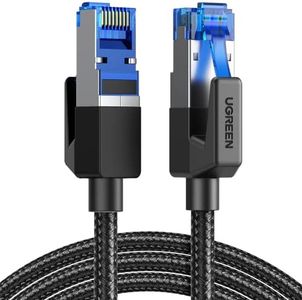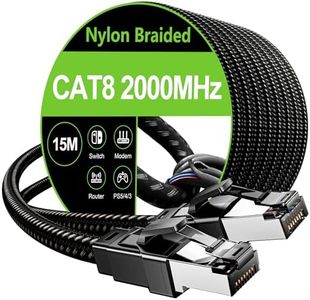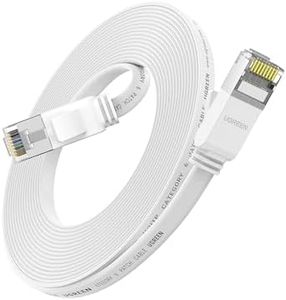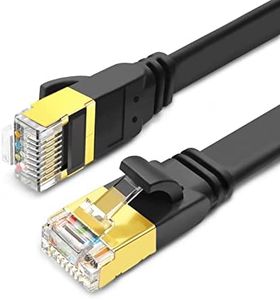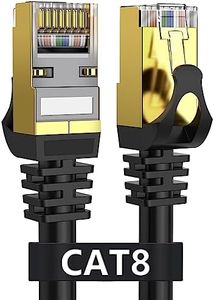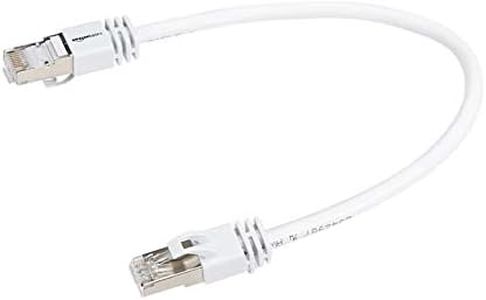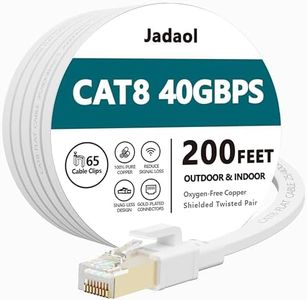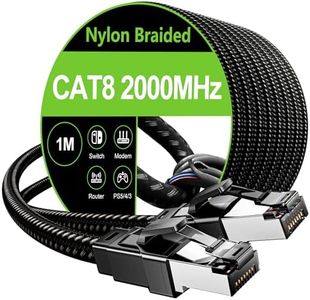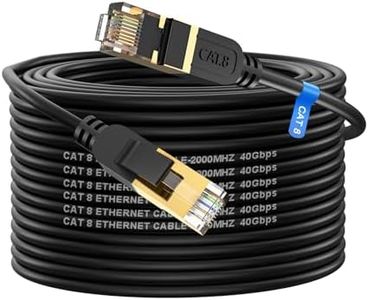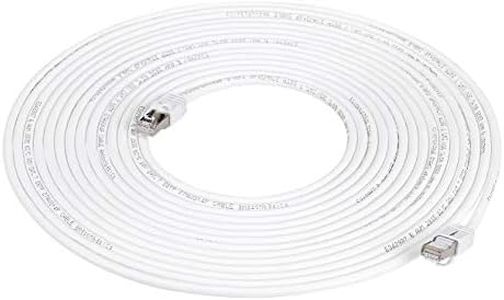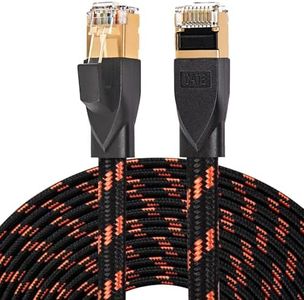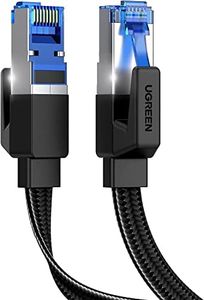We Use CookiesWe use cookies to enhance the security, performance,
functionality and for analytical and promotional activities. By continuing to browse this site you
are agreeing to our privacy policy
10 Best Ethernet Cable For Gaming
From leading brands and best sellers available on the web.Buying Guide for the Best Ethernet Cable For Gaming
Choosing the right Ethernet cable for gaming can make a big difference in your online experience. Wired internet connections usually provide lower latency and more stable speeds compared to Wi-Fi, which is essential for gamers who need quick response times and reliable connectivity. When picking an Ethernet cable, you'll want to focus on a few key specifications that can affect performance, durability, and future-proofing your setup. Understanding these specifications can help you make a decision that matches your gaming needs and avoids potential performance bottlenecks.Cable Category (Cat Rating)The cable category, often written as Cat followed by a number (like Cat5e, Cat6, Cat6a, Cat7, Cat8), is a rating that indicates the maximum speed and bandwidth the cable can support. This is important because it determines how much data can flow through the cable at once, which can affect gaming if you have a very fast internet connection or plan to use the cable for several years. Lower categories like Cat5e are fine for standard internet speeds up to 1 Gbps, but higher categories like Cat6 and Cat6a support higher speeds and more bandwidth, making them more suitable for fast or future-proof gaming setups. If you want a cable that will handle gigabit internet connections reliably, go for at least Cat6. Cat7 and Cat8 are more advanced, supporting higher speeds than most home internet connections offer today; they're great if you're preparing for the future or moving massive amounts of data on your local network.
Cable LengthCable length tells you how far the cable can run from your router to your gaming setup. This matters because longer cables can sometimes lose signal quality, although most modern cables maintain good performance up to certain lengths. For home gaming, cables up to 100 feet (about 30 meters) of standard quality (like Cat6) usually work fine without any noticeable drop in speed. However, for very long runs or to avoid clutter, you may want to keep the cable as short as needed. Measure the distance you need before buying and allow a bit of extra length for routing the cable neatly around furniture.
Shielding (STP vs UTP)Ethernet cables come in shielded (STP) and unshielded (UTP) versions. Shielding is an extra layer of protection that blocks interference from other electronic devices, which can help maintain a cleaner signal. If you’re gaming in an area with lots of electronic equipment, or if the cable will run near power cords or heavy machinery, a shielded cable can help prevent connection issues. For most home environments, unshielded cables work just fine since interference is rare, but if you have any problems with network stability, consider shielded cables.
Connector TypeEthernet cables use connectors called RJ45 plugs, which fit into the standard ports on most routers, gaming consoles, and PCs. This is the common type for home use. Some specialty cables may have different connectors, but for gaming, you almost always want a cable with standard RJ45 connectors on both ends. Always double-check that the cable will fit your devices, especially if your hardware is older or unusual.
Durability and FlexibilityDurability refers to how tough and long-lasting the cable is, while flexibility describes how easy it is to bend around furniture or tight corners. If you'll be moving your setup often or running the cable through high-traffic areas, look for cables with thicker jackets or those labeled as rugged or flexible. Flat cables are easier to hide under carpets or baseboards, while round cables tend to offer a bit more durability.
